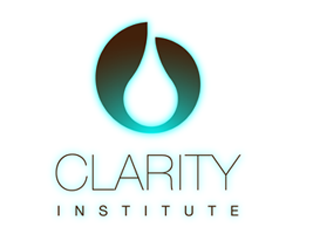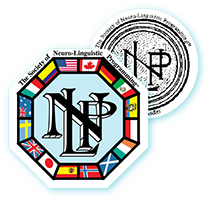The Other Side Of The Coin
Let’s connect the dots: Logic class. The first set of language patterns in the Milton Model. Two lumbar back vertebral discs. And a cannabis and cocaine addict. Ok, here we go…
Logic class: One the most valuable things I learned to do successfully in my college logic courses was to successfully argue my opposing viewpoint in debates. To learn these skills, the professor taught us many ways to persuade and argue within the context of philosophical debate and logic. What this taught me was HOW the other debater could hold his or her strong belief. Having to convince the professor and my classmates in a public debate, through logic, of something I had a strong belief against taught me where my own weaknesses were for what I actually did believe. This assignment provided the ultimate value to me since I had to step into their shoes, so-to-speak, and feel what it was like to think differently and what specifically they did inside their minds to reach their beliefs. I matured from this process and no longer thought anyone was just stupid for holding an honest belief, however different it was from mine. I had several semesters where these types of debates were required and with each experience, I grew my skills, I matured as a person, and my debating became more persuasive. I gained skills to see beyond my own resources. I had learn to think on the other side of the coin.
The first set of language patterns in the Milton Model: In any good Society of NLP Practitioner training, you will learn the Meta Model, where we are focused on recovering deleted, distorted, and generalized information in order to gain clarity and to make changes. You will also learn the Milton Model, where we are focused on being artfully vague to allow the UNconscious mind to create the resources it needs for clarity and to make changes. In the first set of language patterns of the Milton Model, the patterns are the inverse of the Meta Model. The other side of the coin, if you will. In the Meta Model, “who specifically came to the door?” is asked, whereas in the Milton Model, “someone came to the door” is said. Learning when and where to use the Meta Model vs The Milton Model is a matter of which side of the coin you need to be on. Just like logic class, I learned to embrace each side.
Two lumbar back vertebral discs out of place: While twisting and reaching for something, I recently had two lumbar vertebral discs slip out of place. This maneuver sent me into a great deal of pain. It back spasm, and nerve compression which caused even more painful symptoms. Pain. A lot of it. Well, pain is not so different than many other forms of communication, and which side of the coin we decide to process that information on will make a great deal of difference to the how pain is experienced. I had a new client coming the following day and I was in pretty bad shape from this back problem. The new client was coming to get rid of his cocaine and cannabis addiction and I had him convinced by phone to stay drug free until I could see him. So I didn’t want to reschedule his first appointment. I realized I had to greatly reduce my pain or eliminate it, if possible, to be available and to move freely during the appointment in a comfortable enough manner. I’ve learned some things about using the NLP process for pain elimination on my own to help a close family member, as well as having learned quite a bit from a wonderful book by Dr. Dave Dobson from his seminars called Pain Alleviation (http://amzn.to/2r0DE6f). So from the side of the coin I was on, which was to process the pain accurately, and to feeling it acutely I simply turned that side of coin over, and interrupted the way the pain was being communicated. I sorted for different things other than the sensation of pain, so I could no longer accurately process what the pain was doing to me or how I was feeling it. One can either decide to feel the pain or move to the more useful side of the coin, just like the deciding on Meta Model vs. Milton Model. And just like in logic class, arguing successfully an opposing belief. Use what works to get the outcome you want.
A cannabis and cocaine addict: So my new client showed up as scheduled the following day and I worked, for the most part, comfortably enough, free from the severe pain in my back. I was able to spend three hours with this very nice man to figure out HOW he managed to get his life in such an UNdesirable place as to get addicted to cannabis and cocaine. And little by little, with the NLP process for change, with what he communicated to me, I began to help him turn the other side of his coin over to see the things he thought were his problems differently. I helped him to turn the other side of his coin over to hear a different way to communicate to himself and others in his life. And finally, to turn the other side of his coin over and to feel how well he really was already navigating his life as a restauranteur, as a husband, as a father, and as a man he was proud of now. By knowing and living in alignment with his purpose in life, and being guided in his decisions by that purpose, his shift to drug free living was profound and nearly effortless. The coin, once again, turned over to the other side proves to be a very valuable skill asset. Now I don’t mean to say it was the only thing I used to make changes for this man – it was an effective part of the changes. During that appointment I was operating on many different coin turns for myself, and guiding my client to several of his own coin turns. Just like the first set of language patterns of Milton Model is the other side of the coin of the Meta Model, and just like logic class taught me.
So from logic class, to the Milton Model, through two lumbar discs slipping out of place, and to a cannabis and cocaine addict, my appreciation for finding the other side of the coin to get some of my best outcomes has enabled me to pass on this skill to countless clients, students, friends, and family. I’ll often give a coin to someone to remind them to check out what’s on the other side. You might like it better. It might serve you better. It might be the same coin, but it might hold greater value when you turn it over.








